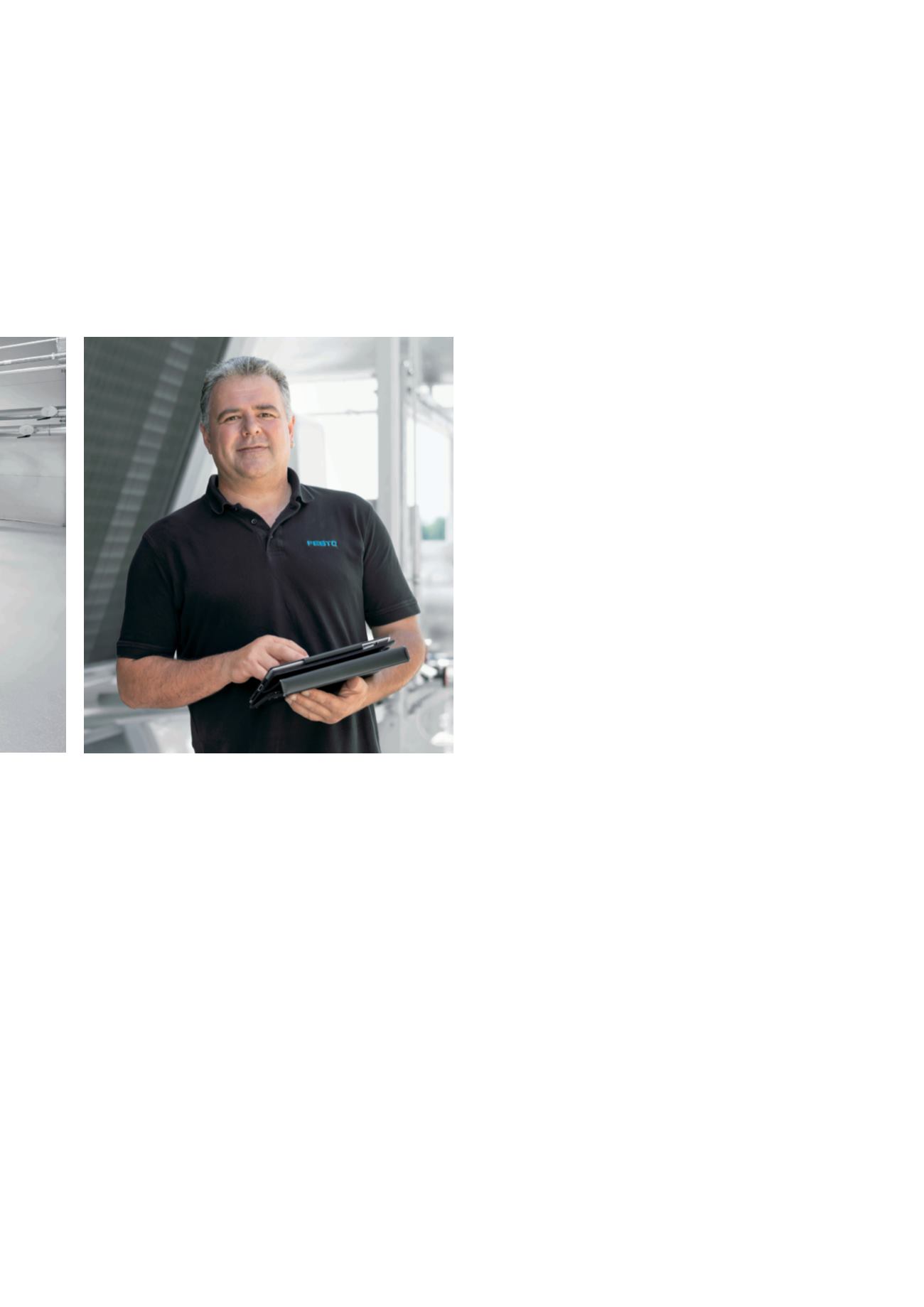

»I was involved with the planning of the building
services from the start. I now see empirical values from
other production sites actually put into practice. The
new control centre also makes our work easier: I can
use a smartphone or tablet to estimate when and
where help is needed.«
Michael Höschele, Building Services
Scharnhausen Technology Plant: Energy efficiency planned and put into practice
The specialists managed to lower the pres-
sure levels of the different networks at the
whole site from eight to six and 18 to 13
bar – a sustainable measure, as just a sin-
gle bar less pressure saves five per cent of
energy. To do so, around 100 installations,
such as metal-cutting machines, assembly
and test machines, had to be adjusted to
suit the new pressure ratios.
Transparency right through to the
machine itself
But not only the large energy consumers,
smaller installations with high energy con-
sumption are also expected to make a con-
tribution to conserving resources in Schar-
nhausen. For maximum energy transpar-
ency, certain machines have to continually
disclose their energy data: only that which
is measurable can be improved over the
long term. The experts thus use sensors,
for example to record the flow of electricity
or compressed air in the facility. The oper-
ating and consumption data read off from
the machine equipped with such a device
is integrated in the production network in
a compressed form and ultimately visual-
ised.
Nature and the environment
A very direct measure for conserving
resources and the environment is the
recovery of rainwater. The new building
features a reservoir with a capacity of
70,000 litres. This is used to supply the
sanitation facilities and water the green
areas. Excess water is fed into a retainer
tank for seepage so that the Körsch, Stutt-
gart’s second biggest river, does not flood
in the neighbouring conservation area. For
optimal noise protection, the acoustic
planners employed specific building meas-
ures to minimise sound radiation. Employ-
ees benefit from this in the buildings, as
do residents outside the factory premises.
21
















